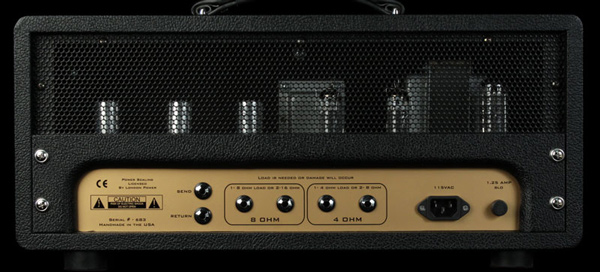Guitar Lead between an Amp Head and Speaker Cab?
Posted: 13 June 2013
Synopsis: So often I stumble upon guitarists still using guitar leads between their amp head and speaker cab. Put simply, a guitar lead does not have large enough conductors (copper strands) to carry an amplified signal. It may work ok at low volumes, but at higher

Why not to use a guitar lead between an amp and speaker?
Short Answer: Guitar leads conductors are too thin!
When connecting a guitar amp head to a speaker cab, you are transferring a strong, amplified signal with enough amperage behind it that it will actually be used to drive the speaker cones. Whereas the signal transferred between the output of a guitar and the input on an amp is weak in comparison and designed to carry merely analog data. While we highlight amp head to speaker cab connections, the same applies for all power amplifier to passive speaker connections. That includes powered mixers to PA speakers, commonly used amongst pub gigging musicians.
Guitar to AmpThe signal flowing between an electric (or acoustic electric) guitar and a typical guitar amplifier, has "high impedance" and is often referred to as Hi-Z. A guitar level signal is actually quite weak, measured in 'mini-volts', and is susceptible to interference along the cable. For this reason guitar leads feature a copper ground shield that wraps around the single inner conductor, protecting it from potential interference. The signal carrying the audio is transferred down the conductor, while the copper shield "grounds" the amp back to the guitar, while also shielding the conductor.
|
 |
Amp to SpeakerAn amp (or power amplifier) takes an audio signal originally intended for transferring between equipment, and then amplifies it to a level suitable for human ears. This type of audio signal we were to as "speaker level". Such a signal can be thought of as carrying the 'audio' signal with the 'power' required to drive the speaker cones. As you adjust the gain on your amplifier, you are changing the amount of power travelling to the speaker. Your speaker cables are the vital link enabling all this power to be transferred. At low volumes, your amp is not pushing a lot of power and the copper conductors required to carry such a signal are minimal (such that a guitar lead may handle it). However at higher volumes when your amp is pushing out large amounts of power (say over 100W), not having sufficient copper conductors inside the cable to carry the signal outputted by the amp, results in power being transferred to 'heat', putting strain on your amplifier and limiting its potential to drive the speaker.
|
 |
|
It should also be noted that amplifiers work in a "push / pull" fashion and require both a + (positive) conductor and a - (negative) conductor inside the speaker cable. Both conductors should be of the same size. In a guitar lead, it's the ground wire that acts as the negative conductor. Therefore using a guitar lead is far from ideal due to the ground wire being comparatively smaller than the conductor. If you need to connect your guitar head to your speaker cab, do your sound and your amp a huge favour and grab a ¼ jack speaker cable instead of always just using the nearest guitar lead. Your bassist may still be doing the same thing, so maybe grab one for him as well. |
 |












